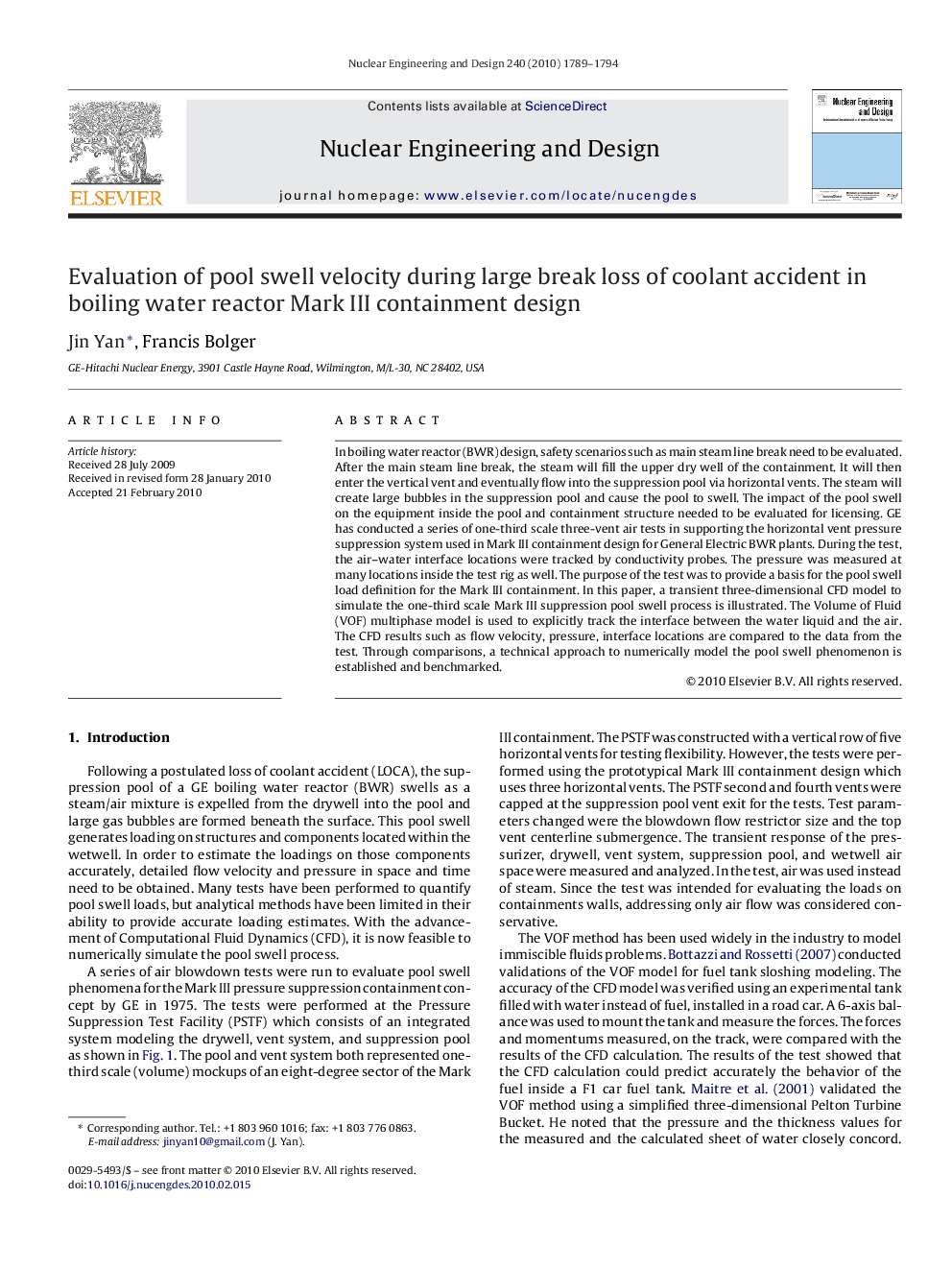| کد مقاله | کد نشریه | سال انتشار | مقاله انگلیسی | نسخه تمام متن |
|---|---|---|---|---|
| 298185 | 511778 | 2010 | 6 صفحه PDF | دانلود رایگان |

In boiling water reactor (BWR) design, safety scenarios such as main steam line break need to be evaluated. After the main steam line break, the steam will fill the upper dry well of the containment. It will then enter the vertical vent and eventually flow into the suppression pool via horizontal vents. The steam will create large bubbles in the suppression pool and cause the pool to swell. The impact of the pool swell on the equipment inside the pool and containment structure needed to be evaluated for licensing. GE has conducted a series of one-third scale three-vent air tests in supporting the horizontal vent pressure suppression system used in Mark III containment design for General Electric BWR plants. During the test, the air–water interface locations were tracked by conductivity probes. The pressure was measured at many locations inside the test rig as well. The purpose of the test was to provide a basis for the pool swell load definition for the Mark III containment. In this paper, a transient three-dimensional CFD model to simulate the one-third scale Mark III suppression pool swell process is illustrated. The Volume of Fluid (VOF) multiphase model is used to explicitly track the interface between the water liquid and the air. The CFD results such as flow velocity, pressure, interface locations are compared to the data from the test. Through comparisons, a technical approach to numerically model the pool swell phenomenon is established and benchmarked.
Journal: Nuclear Engineering and Design - Volume 240, Issue 7, July 2010, Pages 1789–1794